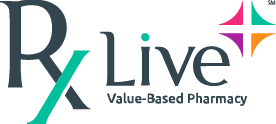Innovations in healthcare can be evaluated by a simple measure: impactability. And across pharmacy, a care plan’s impact is often a reflection of how well patients adhere to their prescriptions.
For CPOs, that’s a problem. Only half of patients undergoing treatment for chronic care take their medications as prescribed. The result? Approximately 50 percent of care plans fail, leading to approximately 25 percent of all hospitalizations.
So how can pharmacy teams address the discrepancy between the medications patients are prescribed and the medications they actually take? And how can they deliver these better outcomes while all the while keeping their eyes on the bottom line?
In this post, we’ll look at how selecting and integrating the right pharmacy technology can help leaders improve the patient outcomes and their program’s financial health.
The challenge: achieve five stars for medication adherence across all payers
Ultimately, quality measures are the bellwether for the impactability of value-based pharmacy programs. That’s because they reflect patient outcomes (and patients’ satisfaction with their care) while simultaneously being directly tied to how providers are compensated for the care they provide.
So, for pharmacy leaders who want to drive better outcomes while increasing reimbursements, achieving a five-star rating is paramount. With this in mind, a healthcare network’s leadership may expect improved Star ratings, and the outcomes they reflect, as a matter of course.
Your CMO, for example, may task the pharmacy program with increasing outpatient medication adherence by five percent over the coming quarter. In this case, the success of meeting that goal will be twofold:
- Patients will experience fewer adverse medical events and fewer corresponding hospitalizations.
- Your network’s Star rating will increase, increasing your rate of compensation for medication-related services.
What’s more: failing to meet this goal can result in a lowered Star rating, with correspondingly financial penalties from payers across the board for poor performance.
So how can pharmacists most efficiently leverage their medication management expertise to improve outpatient adherence, reducing medication-related hospitalizations and increasing reimbursement rates?
The answer lies in levering data into impact.
The solution: designing pharmacy programs by impactability
Traditional predictability models leverage data to identify the most at-risk patients. But realizing the comprehensive benefits of improved patient health outcomes depends on the impactability of your care plans.
Likewise, focusing on impactability can improve the financial health of your pharmacy program overall. To measure the impactability of your program, start with risk scoring. Then, consider…
- Impact optimization. Once you’ve identified the most at-risk patients, further empanel that population by the combined percentage of risk and possibility of risk reduction.
- Implementation factors. How is your team integrating information such as EHR data into care plans?
- Workflow. What labor-intensive activities can you automate? Who completes medication reconciliation and profile review? Who is responsible for reaching out to patients?
Then, for the most effective, efficiently impactable pharmacy program, choose a partner who can help you deliver solutions that scale to your individual needs.
The benefit of a comprehensive, value-based pharmacy system
Pharmacy programs are only as effective as their ability to deliver the information to the right patients, at the right time. True, gathering data is paramount. But data is the foundation of impactability. The next step is using vertically integrated workflows to mine the insights that data supports. Then using that knowledge to build actionable protocols.
What’s more: it needs to be easy for providers to access and share as necessary with their colleagues at each step along the way. And patients, too, need clear paths of communication with their careteams.
RxLive offers a comprehensive, value-based pharmacy system. Using RxLive.ai, your pharmacy team can mine data from Surescripts (which tracks length of treatment, medications, and even environmental factors) along with your existing EHR data. Then, after running analytics on that data, RxLive can and offer key insights to guide treatment.
Of course, the impactability of those insights depends on how easy they are to access. RxLive’s fractional network of pharmacists integrates with your existing care team to help deliver the patient information they need, when they need it, including…
- Stats on medication adherence.
- Potential drug interactions.
- Comorbidities.
And for patients, our telehealth platform empowers pharmacists to deliver easy-to-access, location neutral care.
Reenvisioning the power of pharmacy
Pharmacists are integral to value-based health care. But like the providers they support, they’re often stretched for time – scrambling to help patients and assist their colleagues in increasingly understaffed clinical environments.
That makes it harder than it has to be for CPOs to deliver the full impactability of their pharmacy programs. But the right technology offers a readily available, customizable solution.
Interested in learning more? Get in touch.




